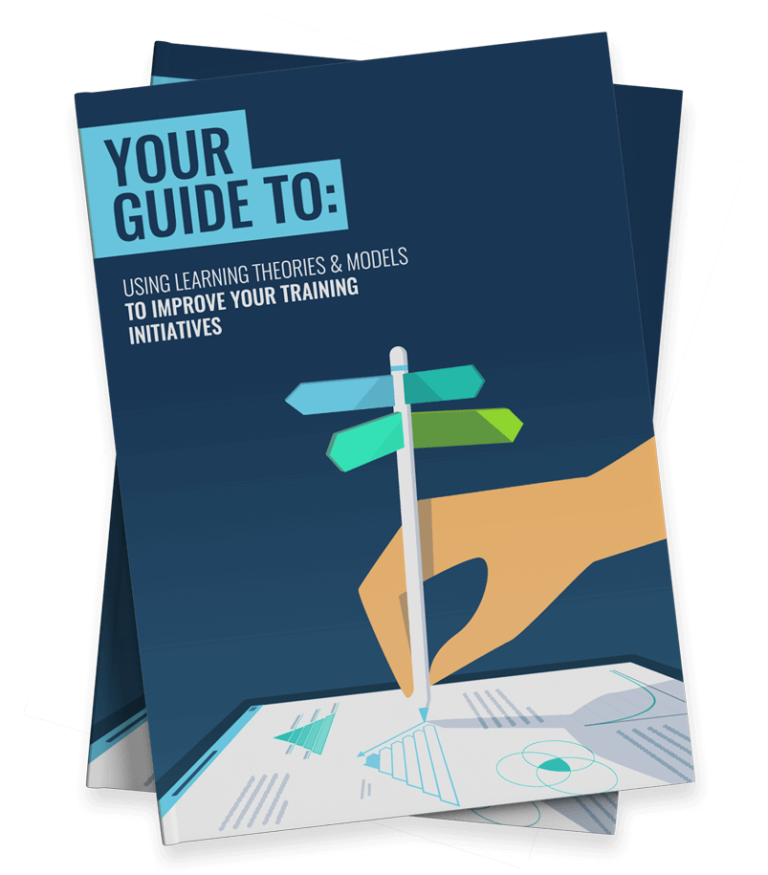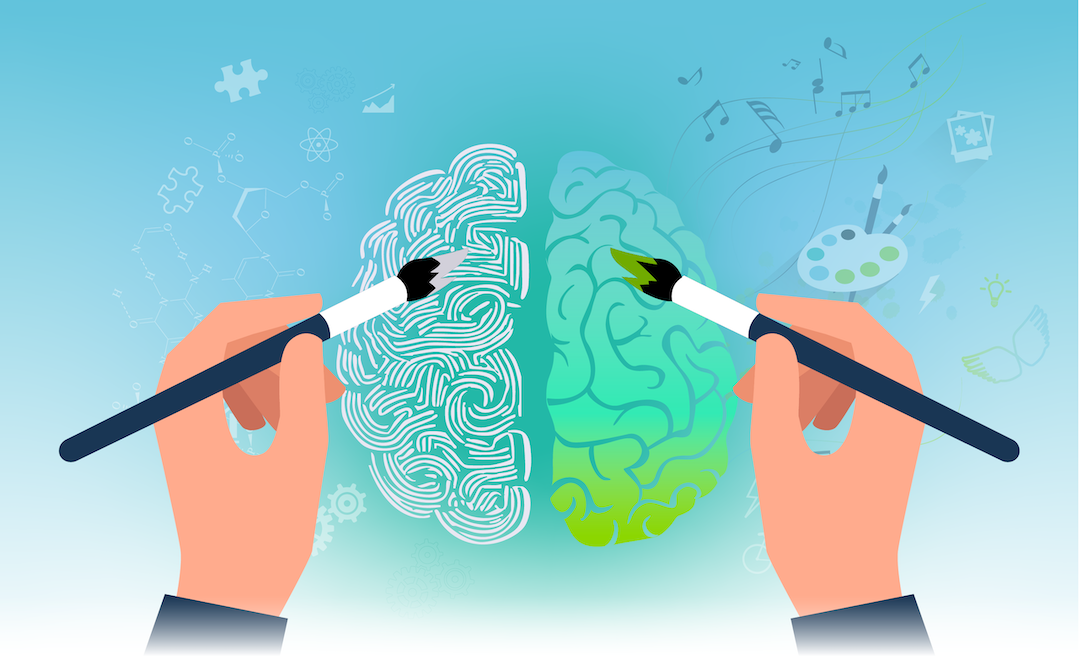
The educational landscape is undergoing a profound shift. With the rapid advancement of technology (we’re looking at you, artificial intelligence) and the increasing complexity of the world, traditional teaching methods are being challenged.
Heutagogy, a learner-centred approach that emphasises self-determination and discovery, offers a promising alternative. In effect, it shifts learners from the passenger seat to the driver’s seat, where they can begin to take control over their journey.
This is an approach that cultivates autonomy, critical thinking, and a lifelong love of learning. As heutagogy’s originators, Hase and Kenyon put it, ‘the focus should be on what and how the learner wants to learn, not on what is to be taught.’
This article explores the core principles of heutagogy, its potential benefits, and practical strategies for implementation. We’ll also explore the role of technology in enhancing the heutagogical experience. Ready to get started? Then grab the steering wheel!
What is Heutagogy?
Traditional education, or ‘pedagogy’, often focuses on the transferal of knowledge, with teachers acting as information repositories and students as passive recipients. Conversely, heutagogy flips the script and places the learner at the centre of the instructional experience.
Stewart Hase and Chris Kenyon coined the term ‘heutagogy’ in 2000. They built upon the concept of andragogy, which focuses on the specific needs of adult learners. After all, adults are typically more self-directed and intrinsically motivated than their younger counterparts.
Before coining this term, Stewart and Chris had been involved in education for many years and shared a common vision for how effective learning happens. Recognising that real-world experiences are often non-linear and unpredictable, they sought a learning approach that mirrored this reality.
Heutagogy takes this a step further by promoting self-determination, where learners become actively involved in shaping their entire learning experience (and not just their content). Here’s how the different approaches break down:
| Pedagogy | Andragogy | Heutagogy |
| Child learning | Adult learning | Self-directed learning |
| Teacher-centred instruction, usually reserved for children or those who require clear guidance and structure. | Adult-centred learning, emphasising self-directedness, internal motivation, and existing experiences. | Self-directed learning with an emphasis on critical reflection and discovery. Learners are seen as autonomous. |
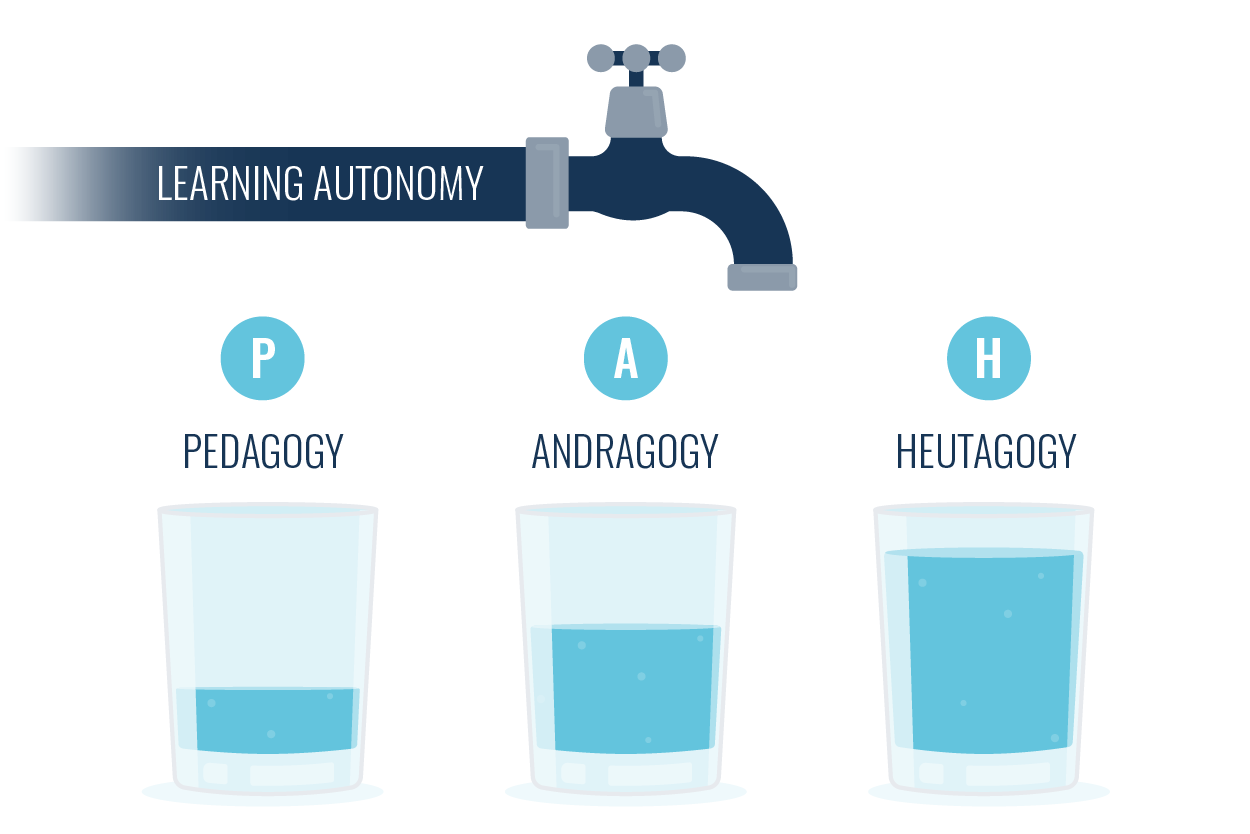
Heutagogy’s etymology comes from the ancient Greek word ‘heuriskein’, which means ‘to discover’ or ‘to find out’. That makes it perfect for a learning approach that focuses on self-directed learning.
This root word is also the foundation for the word ‘heuristic’, which refers to a method of learning by exploration and trial-and-error.
The Key Principles of Heutagogy
Now we understand the differences between these learning approaches, let’s explore the key principles that define heutagogy:
- Self-Directed Learning: Learners take full ownership over their learning journey. This means they set their own learning goals, select learning resources and activities, and assess their progress.
- Critical Reflection: Learners are encouraged to think about their own learning experiences. With a heutagogical approach, you should analyse your learning, identify areas for improvement, and refine your strategy accordingly.
- Discovery: Heutagogy promotes a sense of curiosity and exploration. Learners are encouraged to experiment, solve problems, and find their own solutions to challenges through active participation.
The Goals of Heutagogy:
Heutagogy is a revolutionary approach that aims not just to impart knowledge, but also to empower learners to become self-directed. This shift in focus has two key goals:
- Empowering Lifelong Learners: The primary goal of heutagogy is to equip learners with the skills they need to become self-directed, lifelong learners. By cultivating autonomy and critical reflection, heutagogy ignites intrinsic motivation, empowering learners to take ownership of their journey and embark on a path of continuous self-discovery.
- Developing Learner Capability: Heutagogy transcends mere knowledge acquisition and prioritises the development of learner capability. This is the ability for learners to apply knowledge and skills in unfamiliar and unexpected situations. By fostering this capability, heutagogy arms learners with the skills they need to embrace lifelong learning.
As a result, heutagogy is uniquely positioned to foster a vibrant learning culture. After all, you’re encouraging learners to keep progressing, even when their formal training programmes stop. You’re also focusing on developing skills, not just transferring information.
The Benefits of Heutagogy:
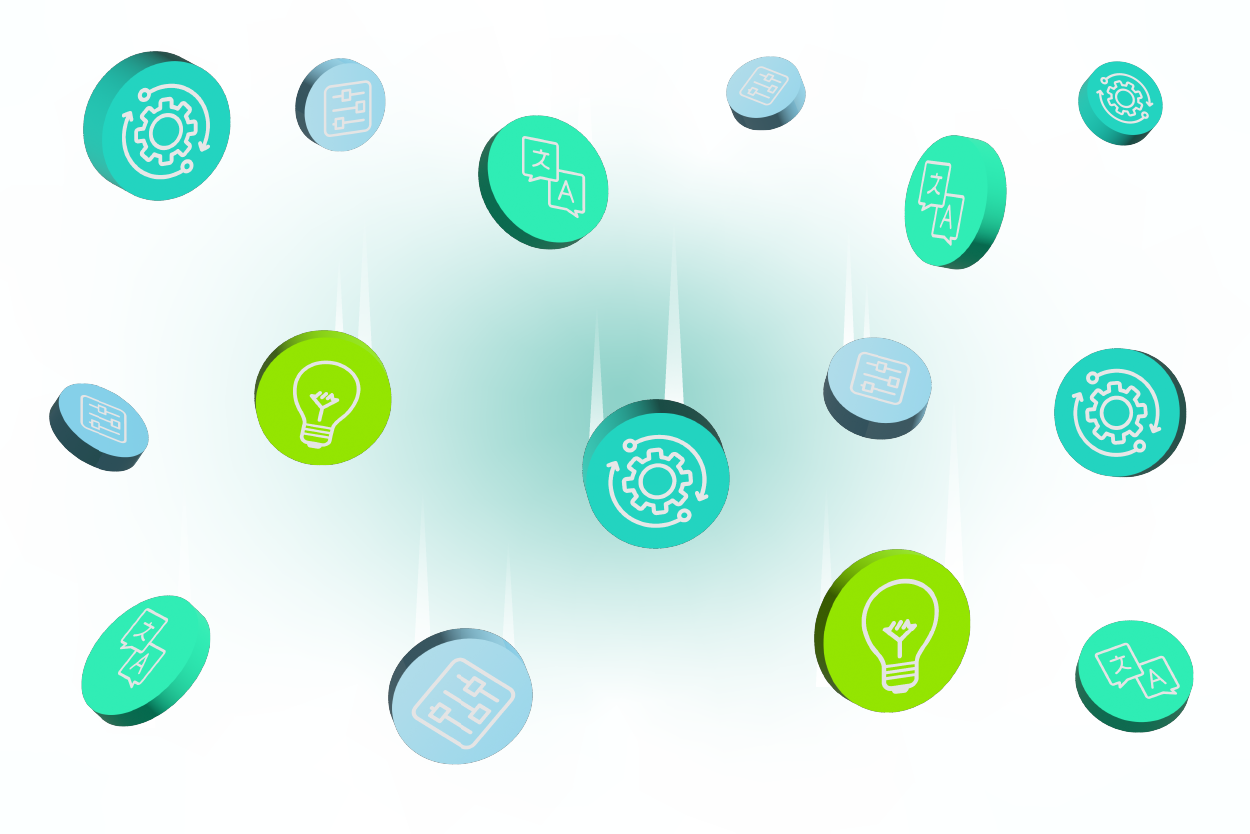
Heutagogy offers a range of benefits for both learners and those who design and implement learning experiences. Here are some key advantages.
For Learners:
- Empowerment & Ownership: Heutagogy fosters autonomy, granting learners a sense of ownership over their learning goals and the process of achieving them. This leads to increased engagement and motivation. In fact, an Effectory study found that 79% of autonomous employees are more engaged than those who lack autonomy.
- Deeper Learning: By encouraging active exploration, problem-solving, and reflection, heutagogy helps learners to develop their critical thinking skills and gain a deeper understanding of concepts. Research shows that critical thinking skills help to reduce our cognitive biases and improve our decision-making ability.
- Learner Capability: As mentioned earlier, heutagogy goes beyond mere knowledge acquisition. It also boosts learner capability, thereby preparing them for the complexities of 21st century workplaces. This means learners will be able to anticipate and adapt to change, rather than simply react to it.
For Learning Professionals:
- Adaptability & Flexibility: By shifting from a traditional instructor-focused model to a more collaborative approach, learners become co-creators of knowledge. They do this by using their own experiences as a learning resource. This frees you up to focus on providing more learning opportunities for your knowledge hungry audience.
- Increased Innovation: Heutagogy encourages learners to explore diverse resources, embrace different approaches, and think outside of the box. This, in turn, helps to create a culture of innovation and creativity. According to McKinsey, 87% of executives agree that innovation is essential to their organisation’s success.
- Focus on Metacognition: Encouraging your learners to reflect on their learning process is a skill known as metacognition (or thinking about thinking). This self-awareness helps learners to become more strategic and effective. In fact, the Education Endowment Foundation has found that metacognition leads to ‘very high impact for very low cost’.
Research into Heutagogy
Having explored the potential benefits of heutagogy, let’s dive into the evidence. We’ve collected the key findings from numerous studies to provide an overview. The results are overwhelmingly positive.
- A 2019 study conducted at an Israeli college revealed that while the transition to a heutagogical approach presented initial hurdles, students subsequently expressed a strong preference for self-directed learning.
- A 2020 study exploring heutagogy’s impact on teacher professional development found that it ‘proved to be panacea to brain neuroplasticity and neurogenesis’. It also helps teachers to ‘stay active as lifelong learners’.
- A review of 123 papers from 2018 to 2022 found that ‘there are several advantages’ to using a heutagogy approach in education. These include, ‘improved mentoring skills’, ‘increased self-determined learning’, and the development of communication skills.
- Finally, this 2022 study from the Bhopal School of Social Sciences reveals that a heutagogical approach supports ‘academic achievement, learning engagement and positive emotions’. It also notes that ‘it helped to break the monotony of the class’.
Putting Heutagogy into Action:
Heutagogy offers a powerful framework for creating learner-centred, engaging learning experiences. But you might be wondering: what does this mean for me? What role do educators play in a learner-focused approach?
Thankfully, heutagogy doesn’t mean that learning professionals are left without a role. In fact, instructors play a crucial part in facilitating this process by designing effective learning experiences and creating a supportive environment.
With this in mind, let’s explore some practical strategies that you can implement to bring heutagogy to life in your classroom or structured workplace training programme.
- Get to Know Your Learners: Start by understanding your learners’ goals, prior knowledge, and preferences. You can do this by conducting a training needs analysis and creating learner personas. Following this, you’ll be in a good position to design learning experiences that cater to their interests and equip them with the skills they need.
- Provide Options: As we’ve seen, heutagogy is all about giving learners freedom to control their own learning journey. To do this, you’ll need to provide your learners with choice in how they approach the learning experience. Allow them to choose their resources, learning activities, and ways to demonstrate their understanding.
- Focus on Problems: Instead of traditional learning approaches, like lectures, design activities that present real-world problems or challenges. Then encourage your audience to research, analyse, collaborate, and come up with solutions. Merrill’s First Principles are an excellent starting point for unleashing the power of problem-solving.
- Encourage Collaboration: Critical reflection is often best cultivated in a social environment where learners can bounce ideas off of each other, challenge each other’s perspectives, and learn from diverse viewpoints. Here at Growth Engineering, we’re big advocates for social learning approaches.
- Offer Support: Although heutagogy prioritises self-directed learning, you shouldn’t leave your learners to fend for themselves entirely. Provide scaffolding and support through resources, coaching, and feedback to help them navigate their learning journey effectively. Need help? Then check out our article on the Zone of Proximal Development.
- Inspire Reflection: As we’ve seen, critical thinking is a vital part of a heutagogical learning process. Encourage the use of journals, discussions, or self-assessment tools to help your learners understand their strengths and weaknesses, and develop strategies for improvement.
These are just a few of the ways you can adapt your approach to embrace heutagogy. We recommend starting small and making incremental changes based on your learners’ needs and your specific learning context.
Learning technology can support this process. Indeed, learning management systems and learning apps offer an easily accessible environment for learners to access online resources and communication tools that support self-directed learning.
Heutagogy and Artificial Intelligence
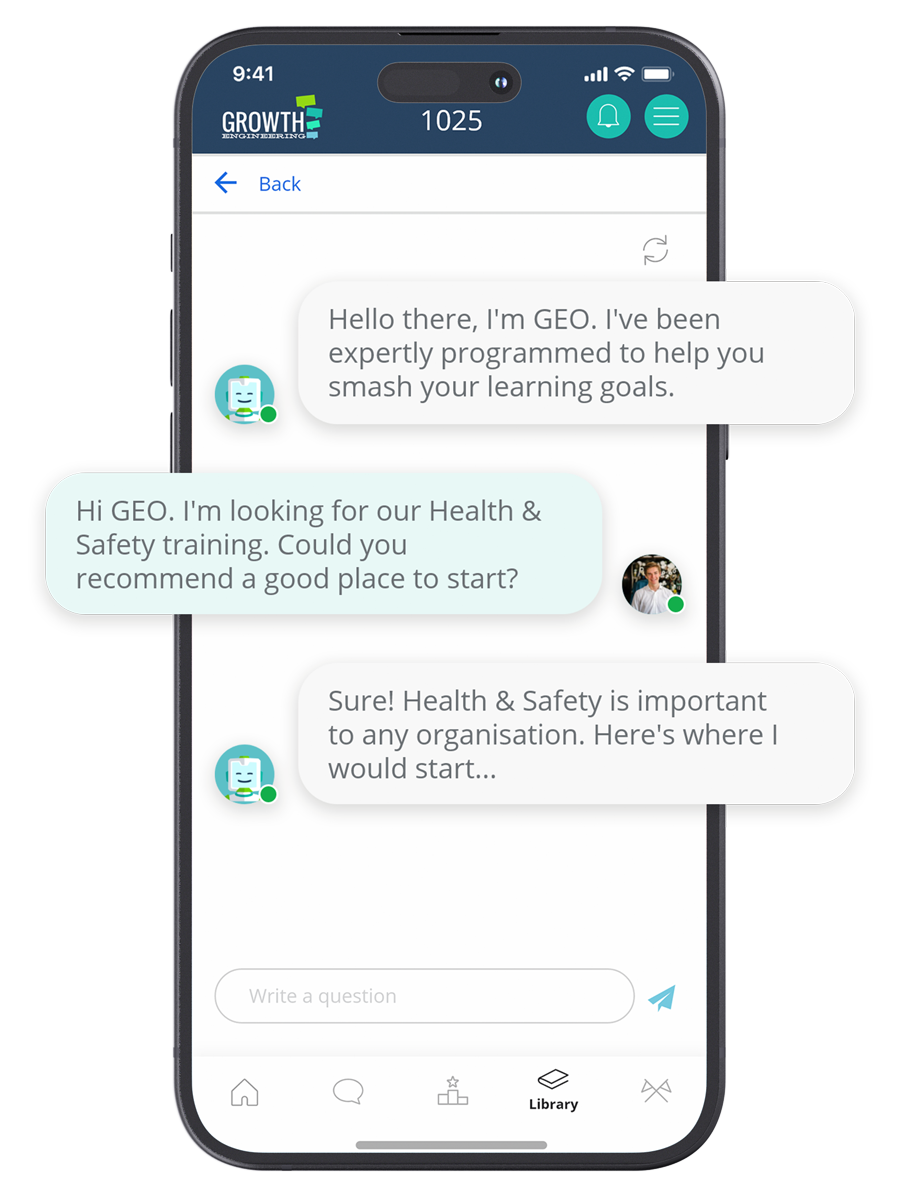
Heutagogy’s emphasis on learner autonomy aligns perfectly with the capabilities of artificial intelligence. In fact, AI and AI coaches can enhance self-directed learning experiences in various ways.
For instance, artificial intelligence can analyse learners’ data (interests, strengths, preferences, etc.) to suggest personalised learning paths. It can even provide real-time feedback on learner performance, helping to identify areas for improvement.
If you take things a step further, AI coaches can simulate expert tutoring, offering explanations and examples to support learning. It can even adjust the content and the pace of learning based on the learner’s progress and understanding.
The beauty of this approach lies in its boundless nature. Learners can explore their curiosity without limitations, ask as many questions as they want, and engage deeply with their coach. As a steadfast companion, it will offer support throughout their lifelong learning journey, whenever and wherever needed.
The Limitations of Heutagogy:
As we’ve seen, heutagogical learning approaches offer real benefits for learners and educators alike. However, it’s also important to acknowledge its limitations. Here are some key challenges to consider:
- Lack of Direction: Heutagogy grants learners a great deal of freedom and responsibility. Unfortunately, there may be members of your audience who aren’t ready to step up. Some learners will still require more structure and guidance, especially those with limited prior knowledge or experience.
- Lack of Motivation: This approach also relies heavily on intrinsic motivation. Your learners will need to be self-motivated to set goals, find resources, and manage their time effectively. If they’re not motivated then your learning programme is doomed to fail.
- Assessment Limitations: Traditional assessment methods often fail to align with heutagogical learning experiences. After all, heutagogy encourages learners to test themselves and monitor their own progress. New approaches may be necessary to assess critical thinking ability, problem-solving skills, and learner capability.
- Adapting to Change: Moving from a teacher-centred or instructor-focused approach to a facilitator role may prove challenging for those who are used to traditional teaching methods. This will require a change in mindset for those who may feel less in control or less valuable in the learning process.
While heutagogy holds immense potential, it’s also clear that successful implementation requires careful consideration and planning. However, with a commitment to adaptation and the right support, the realisation of lifelong learning is within reach.
Final Words
Heutagogy represents a paradigm shift in education, moving beyond the traditional models of pedagogy and andragogy to prioritise learner autonomy and self-direction. In doing so, it shifts the focus from mere knowledge acquisition to the development of learner capability.
Indeed, by placing learners at the heart of the learning process, it fosters critical thinking, problem-solving skills, and a lifelong love of learning. The advantages of this approach are evident for both individual learners and organisations striving towards excellence.
Of course, there are challenges. Embracing heutagogy requires a seismic mindset shift. But, with careful planning, support, and a commitment to learner empowerment, this approach can revolutionise education and reposition learners as the architects of their own learning journeys.
Thank you for reading. Heutagogy is one of many learning theories. Get the full story and enhance your training approach with our guidebook, ‘The Learning Theories & Models You Need to Know’. Download it now!

